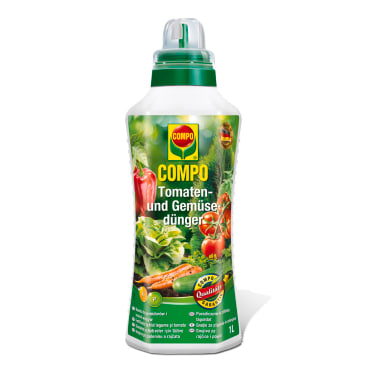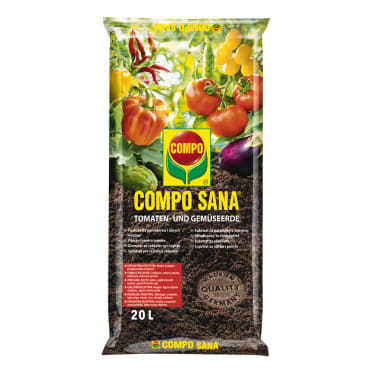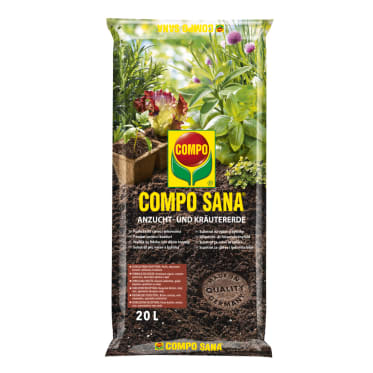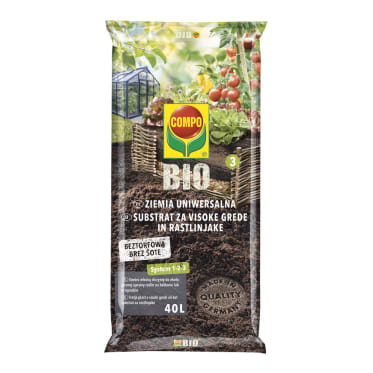Frequent search terms

- COMPO
- Guide
- Plant Care
- Herbs, fruits and vegetables
- Edible weeds
Using vitamin-rich uncontrolled growth in cooking
Edible weeds
Weeds grow however and wherever they please – you can either complain about it or make the best of it. Many of the stubborn plants are very well suited to use in cooking. They often give our body more nutrients than well-nurtured vegetables. In this article, we show you a rather unique way to combat them and introduce you to six edible weeds that perfectly complement a healthy diet. IMPORTANT: Pick weeds that you can clearly identify! The best time to pick them is in the morning when the herbs are still succulent and fresh.
Table of content
Diverse and free
Available anytime, anywhere
Vitamin-rich
Dandelion

The good old dandelion is easy to recognise and you can't go wrong with it because all its components are edible. The only part you shouldn't use is the white milk that exudes from the stems rinse this off. With its vitamin A and C content, the dandelion can definitely compete with a head of lettuce and it also provides our body with lots of protein and potassium. Have you picked a little too zealously? It doesn't matter – dandelion freezes well and can be eaten later. Besides an aromatic salad, the flowers can also be used to make delicious teas. The best-known product of the flowers is probably dandelion syrup.
Spinach substitute
Nettle

Nettles are among the most unpopular garden weeds – we think this is entirely unjustified. The feared leaves are full of vitamin C, iron and calcium. As a medicinal plant, nettle is even used to treat rheumatism and urinary tract infections. When picking and preparing the leaves, you should wear gloves, but the leaves quickly lose their sting when they are steamed or thoroughly chopped. The leaves can be prepared in the same way as spinach or you can use the weed to make a delicious pesto. Nettles can also be used to make hearty meals – as a filling for ravioli or in a soup.
Our TIP: Nature will also appreciate it if you leave some nettles in your garden. They are an important shelter for insects and a source of food for many species of butterfly.
Spicy aroma
Ground elder

Ground elder will keep coming back no matter what you do. If it has not yet conquered your garden, you can look for it on the edge of forests – the weed prefers to grow in semi-shaded spots. The young leaves with a slightly spicy aroma taste great, with the flavour resembling a mixture of carrots and parsley. It is worth picking them, as the leaves have high quantities of vitamin A and minerals – ground elder even beats kale to be the number one regional superfood. The stems and flower shoots can also be prepared. With its spicy aroma, ground elder is the perfect herb for potato salad; like spinach, it can also be used to make a purée. Or give your green smoothies that extra bit of freshness with a few leaves – you won't regret it!
Quite bitter
Ground ivy

Ground ivy can be easily identified by its small purple flowers. If it's not growing on your lawn, it's worth taking a look under hedges and shrubs. Ground ivy likes to spread wherever it is cool and moist. It is a good idea not to pick too many of the wrinkled leaves at once – they may be rich in vitamin C but taste rather bitter. To get a taste of it, you can add a small amount to herb butter or herb quark. The leaves also go well in salads, stews and omelettes. The flowers and shoot tips can also be eaten. As they have a rather sweet flavour, they are well suited to refining desserts.
Garlicky aroma
Bear's garlic

You can find bear's garlic in meadows and forests from March until mid-May. But beware: As the leaves hardly differ from those of the poisonous lily of the valley, there is a high risk of confusion! Compared to the flowers, the leaves of bear's garlic are matt on the underside. You can also recognise bear's garlic by its garlicky smell and after picking it for a while the scent will rub off onto your hands. You have probably heard of pesto and dips made with bear's garlic. Thanks to its aromatic flavour, bear's garlic is one of the tastiest weeds around and an indispensable part of the menu of many a restaurant.
Rich in protein
Chickweed

Exterminating chickweed is almost impossible. Luckily, you can also just eat their leaves. Besides their high protein and magnesium content, the herbaceous plant is also known for its mild, aromatic flavour. It goes well in soups or salads, but chickweed can also be used in herb butter or spreads. You can easily find chickweed as it prefers to grow on fallow land like empty farmland, beds or on open waysides.
Fresh from the garden
Products for growing your own produce











